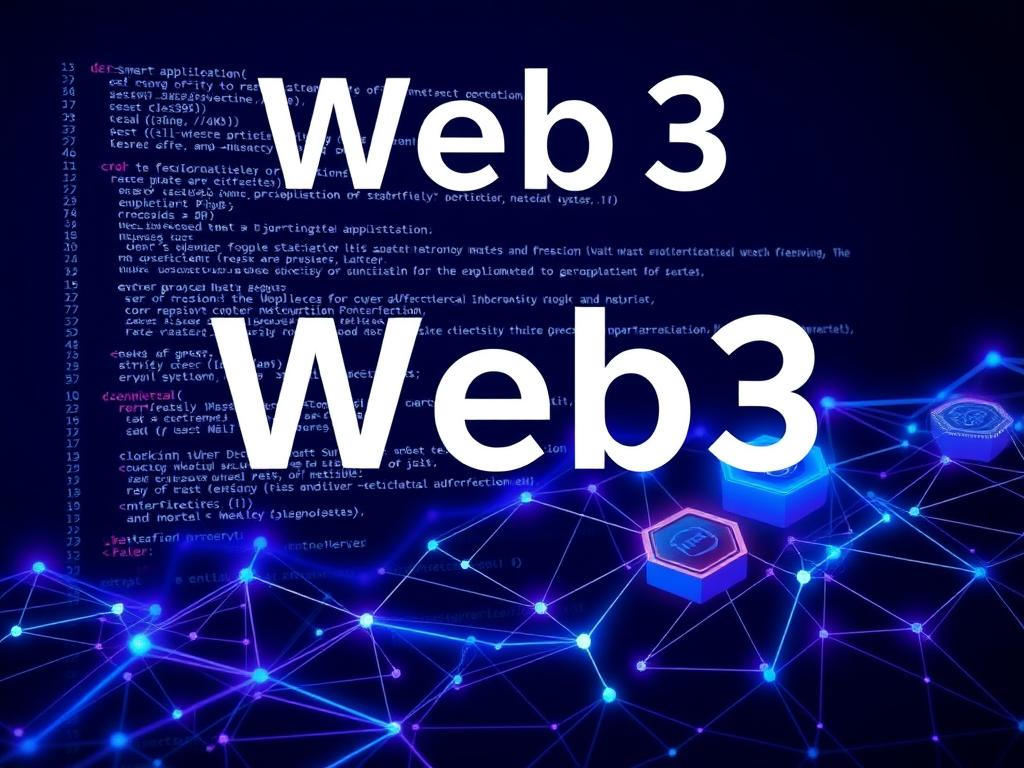In this comprehensive guide, we’ll explore the programming languages and technologies projected to dominate the 2025 job market, backed by current industry data and salary trends. More importantly, we’ll provide actionable learning pathways for each skill, helping you efficiently upskill and position yourself as a competitive candidate in tomorrow’s tech ecosystem.
The Programming Landscape in 2025: What Employers Want
According to recent industry analysis, the tech job market is bouncing back strong in 2025, with companies averaging nearly 300 open software engineer positions each. While AI tools are becoming part of everyday development workflows, they’re creating new opportunities rather than replacing programmers.
The focus has shifted from merely writing code to understanding how to integrate AI, work with machine learning models, and solve complex problems that automation can’t handle alone. Companies are particularly interested in developers who can work with AI tools, understand cloud computing, and handle data analytics.
“The most valuable engineers in 2025 aren’t just coders—they’re problem solvers who can leverage cutting-edge tools and technologies to create innovative solutions.”
Before diving into specific skills, let’s understand what makes a programming language or technology worth learning in 2025:
- Strong market demand with growing job opportunities
- Competitive salary potential (many roles offering $120,000+ annually)
- Application in emerging technologies (AI, cloud, IoT)
- Versatility across multiple industries
- Strong community support and continuous development
Now, let’s explore the specific programming skills that meet these criteria and are projected to dominate the 2025 job market.
1. Python: The Versatile Powerhouse for AI and Data Science

Python continues to dominate as the most versatile and beginner-friendly programming language in 2025. With over 108,000 job openings currently available, Python’s clean, readable syntax makes it perfect for those new to coding while its powerful libraries make it indispensable for experienced developers.
Why Python Is Critical in 2025
Industry Demand
Python ranks as the most beginner-friendly option with widespread adoption across industries. Its versatility spans web development, data analysis, AI, machine learning, and automation.
Salary Trends
Python developers earn an average of $120,000 annually in the US, with specialists in AI and machine learning commanding up to $150,000+.
Real-World Applications
- AI and machine learning with TensorFlow, PyTorch, and Keras
- Data analysis and visualization with Pandas, NumPy, and Matplotlib
- Web development with Django and Flask
- Automation and scripting for productivity
- Cloud computing integration
Learning Pathway for Python
Beginner Resources
- Free: Codecademy’s Learn Python – Interactive lessons for beginners
- Free: freeCodeCamp’s Python Certification – Comprehensive curriculum
- Paid: Complete Python Bootcamp on Udemy – Structured course with projects
Advanced Specializations
- AI/ML: DeepLearning.AI’s Machine Learning Specialization
- Data Science: DataCamp’s Data Scientist with Python
- Web Development: Django’s Official Tutorial
Projects to Build
- Predictive analytics dashboard using real-world datasets
- AI-powered recommendation system
- Automated data scraping and analysis tool
- RESTful API with Django or Flask
Pro Tip: Focus on Python’s application in AI and data science to maximize your market value. Create a GitHub portfolio showcasing projects that demonstrate your ability to solve real business problems using Python’s data analysis and machine learning capabilities.
2. JavaScript and TypeScript: Essential for Modern Web Development

JavaScript continues to be the backbone of web development in 2025, with 62% of developers using it regularly. While Python has recently overtaken JavaScript as the most used language on GitHub, JavaScript remains essential for both front-end and back-end development.
Why JavaScript/TypeScript Are Critical in 2025
Industry Demand
JavaScript developers are among the most sought-after, with TypeScript gaining significant traction in enterprise environments. The ecosystem continues to evolve with frameworks like React, Angular, and Vue dominating front-end development.
Salary Trends
JavaScript developers earn around $129,000 annually, with TypeScript specialists commanding premium salaries due to the language’s enhanced security and maintainability features.
Real-World Applications
- Dynamic, interactive websites and web applications
- Single-page applications (SPAs) with React, Angular, or Vue
- Server-side development with Node.js
- Mobile app development with React Native
- AI integration with TensorFlow.js
- Real-time applications with WebSockets
Learning Pathway for JavaScript/TypeScript
Beginner Resources
- Free: JavaScript.info – Modern JavaScript tutorial
- Free: freeCodeCamp’s JavaScript Certification
- Paid: The Complete JavaScript Course on Udemy
TypeScript and Framework Resources
- TypeScript: Official TypeScript Handbook
- React: React Documentation
- Node.js: Node.js Learning Path
Projects to Build
- Full-stack application with React/TypeScript frontend and Node.js backend
- Real-time dashboard with data visualization
- Progressive Web App (PWA) with offline capabilities
- API integration project consuming multiple third-party services
Pro Tip: 85% of Node.js developers now prefer TypeScript for enterprise applications. Focus on learning TypeScript alongside JavaScript to significantly increase your employability for enterprise-level positions. Create projects that demonstrate your understanding of type safety and object-oriented programming principles.
3. Rust: The Future of Secure, High-Performance Systems

Rust has experienced remarkable growth, now sitting in the top 15 of the TIOBE index. Its focus on memory safety without sacrificing performance makes it increasingly valuable for system-level programming and security-critical applications.
Why Rust Is Critical in 2025
Industry Demand
Rust adoption is accelerating, particularly in areas where security and performance are paramount. Major companies like Microsoft, Google, and Mozilla are investing heavily in Rust development.
Salary Trends
Rust developers command premium salaries, with averages exceeding $130,000 annually due to the specialized nature of the skill and its growing demand in critical infrastructure.
Real-World Applications
- Systems programming and operating system components
- High-performance web services and microservices
- Game engines and performance-critical applications
- Embedded systems and IoT devices
- Blockchain and cryptocurrency development
- Security-critical applications (recommended by the NSA)
Learning Pathway for Rust
Beginner Resources
- Free: The Rust Programming Language Book – Official comprehensive guide
- Free: Rustlings Course – Small exercises to get you used to reading and writing Rust code
- Paid: Rust Programming Masterclass on Udemy
Advanced Resources
- Learning Rust With Entirely Too Many Linked Lists – Deep dive into memory management
- Tokio Tutorial – Asynchronous programming in Rust
- Awesome Embedded Rust – Resources for embedded systems
Projects to Build
- High-performance web server or API
- Command-line utility with complex functionality
- System component replacement (e.g., file system utility)
- Embedded system application for IoT
Pro Tip: Rust’s built-in memory safety features are changing how we think about secure coding. Focus on understanding Rust’s ownership model and borrow checker, as these concepts set Rust apart and are highly valued by employers working on security-critical applications.
4. Go (Golang): Powering Cloud-Native Development

Go has established itself as the language of choice for cloud-native applications and microservices. Created by Google, Go’s simplicity, efficiency, and built-in concurrency make it perfect for modern distributed systems.
Why Go Is Critical in 2025
Industry Demand
Go developers are in high demand, particularly in companies building cloud services, microservices architectures, and containerized applications. Major platforms like Docker and Kubernetes are built with Go.
Salary Trends
The job market for Go developers is exceptionally strong, with average salaries reaching $132,823 in the US. Companies like Google, Uber, and Dropbox actively recruit Go developers.
Real-World Applications
- Cloud-native applications and microservices
- Container orchestration (Docker, Kubernetes)
- High-performance web services
- Distributed systems and networking tools
- DevOps and infrastructure automation
- Real-time data processing pipelines
Learning Pathway for Go
Beginner Resources
- Free: A Tour of Go – Interactive introduction to Go
- Free: Go by Example – Hands-on introduction to Go with annotated example programs
- Paid: Go: The Complete Developer’s Guide on Udemy
Advanced Resources
- Awesome Go – Curated list of Go frameworks, libraries, and software
- Practical Go Lessons – Deep dive into Go programming
- Go Web Examples – Web development with Go
Projects to Build
- RESTful API or microservice
- Concurrent data processing application
- CLI tool for DevOps automation
- Real-time web application with WebSockets
Pro Tip: Go’s incredible speed and concurrency capabilities through goroutines make it perfect for cloud-native applications. Focus on building projects that demonstrate your understanding of concurrent programming and microservices architecture to stand out to employers in the cloud computing space.
5. Cloud Computing and DevOps Skills

Cloud computing skills have transitioned from optional to essential for developers in 2025. Understanding cloud services, containerization, and DevOps practices is now fundamental for building scalable, resilient applications.
Why Cloud/DevOps Skills Are Critical in 2025
Industry Demand
Cloud engineers and DevOps specialists are among the most sought-after professionals, with demand far exceeding supply. Companies across all industries are migrating to cloud-native architectures.
Salary Trends
Cloud engineers earn an average of $135,000+ annually, with DevOps engineers commanding similar or higher salaries due to their critical role in modern development workflows.
Key Technologies
- Cloud Platforms: AWS, Azure, Google Cloud
- Containerization: Docker, Kubernetes
- CI/CD: Jenkins, GitHub Actions, GitLab CI/CD
- Infrastructure as Code: Terraform, CloudFormation
- Monitoring: Prometheus, Grafana, ELK Stack
Learning Pathway for Cloud/DevOps
Beginner Resources
- Free: AWS Free Digital Training
- Free: Microsoft Learn for Azure
- Free: Google Cloud Training
Certifications Worth Pursuing
Projects to Build
- Multi-tier application deployed on cloud infrastructure
- CI/CD pipeline for automated testing and deployment
- Infrastructure as Code templates for reproducible environments
- Containerized microservices with Kubernetes orchestration
Pro Tip: Cloud certifications significantly boost your employability. Start with a major provider (AWS, Azure, or GCP) based on job market demand in your area, then add containerization skills with Docker and Kubernetes. Document your cloud projects thoroughly on GitHub, including architecture diagrams and infrastructure code.
6. AI and Machine Learning Frameworks

AI isn’t exclusive to data scientists anymore. In 2025, understanding AI and machine learning frameworks is becoming essential for developers across various domains, enabling them to integrate intelligent features into applications.
Why AI/ML Skills Are Critical in 2025
Industry Demand
AI integration is rapidly becoming standard across applications. According to Gartner, by 2028, about 33% of enterprise software will include some form of AI integration, creating massive demand for developers with AI skills.
Salary Trends
Developers with AI/ML skills command premium salaries, often 20-30% higher than traditional software engineers, with averages exceeding $150,000 for experienced professionals.
Key Frameworks and Libraries
- TensorFlow/Keras: Deep learning and neural networks
- PyTorch: Research-oriented deep learning
- scikit-learn: Traditional machine learning algorithms
- Hugging Face: Natural language processing models
- TensorFlow.js: AI in web applications
Learning Pathway for AI/ML
Beginner Resources
Advanced Resources
Projects to Build
- Recommendation system for products or content
- Natural language processing application (chatbot, text analyzer)
- Computer vision project (object detection, image classification)
- Predictive analytics dashboard for business metrics
Pro Tip: Focus on practical AI integration rather than theoretical depth. Employers value developers who can effectively implement pre-trained models and AI services into applications. Build projects that solve real business problems using AI capabilities like recommendation systems, natural language processing, or predictive analytics.
7. Mobile Development: Swift and Kotlin

Mobile development remains a critical skill in 2025, with Swift (iOS) and Kotlin (Android) standing as the primary languages for native app development. As mobile experiences become increasingly sophisticated, expertise in these languages is highly valued.
Why Mobile Development Skills Are Critical in 2025
Industry Demand
Mobile developers continue to be in high demand as businesses prioritize mobile-first strategies. Swift has become the dominant language for Apple’s ecosystem, while Kotlin is Google’s preferred language for Android development.
Salary Trends
iOS developers earn an average of $120,000 annually in the U.S., with Android developers commanding similar salaries. Full-stack mobile developers who can work across both platforms are particularly valuable.
Key Technologies
- Swift: Native iOS, iPadOS, macOS development
- SwiftUI: Modern UI framework for Apple platforms
- Kotlin: Native Android development
- Jetpack Compose: Modern UI toolkit for Android
- React Native: Cross-platform development
- Flutter: Google’s UI toolkit for cross-platform apps
Learning Pathway for Mobile Development
Swift Resources
- Free: Apple’s Swift Resources
- Free: 100 Days of Swift
- Paid: iOS App Development Bootcamp on Udemy
Kotlin Resources
Projects to Build
- Feature-rich mobile app with complex UI and animations
- App integrating device features (camera, location, biometrics)
- Cross-platform app using React Native or Flutter
- App with offline capabilities and synchronization
Pro Tip: While cross-platform frameworks like React Native and Flutter are popular, native development skills in Swift and Kotlin remain highly valued for performance-critical and platform-specific applications. Focus on mastering one platform first, then expand to cross-platform development to maximize your employability.
8. Web3 and Blockchain Development

Web3 technologies are transforming industries beyond cryptocurrency, with applications in finance, supply chain, healthcare, and more. Understanding blockchain fundamentals and smart contract development is becoming increasingly valuable in 2025.
Why Web3 Skills Are Critical in 2025
Industry Demand
Web3 developers are in high demand but short supply, creating premium opportunities for those with blockchain expertise. Major companies and startups are investing heavily in blockchain solutions.
Salary Trends
Blockchain developers command some of the highest salaries in tech, averaging $150,000+ annually, with experienced smart contract developers earning up to $175,000.
Key Technologies
- Solidity: Smart contract development for Ethereum
- Rust: Smart contract development for Solana
- Web3.js/ethers.js: JavaScript libraries for Ethereum
- Truffle/Hardhat: Development frameworks
- IPFS: Decentralized storage
- Metamask: Wallet integration
Learning Pathway for Web3
Beginner Resources
- Free: CryptoZombies – Interactive Solidity tutorial
- Free: Ethereum Developer Tutorials
- Paid: Blockchain Developer Bootcamp on Udemy
Advanced Resources
Projects to Build
- DeFi application (decentralized exchange, lending platform)
- NFT marketplace or collection
- DAO (Decentralized Autonomous Organization)
- Supply chain tracking system on blockchain
Pro Tip: Focus on understanding the business applications of blockchain beyond cryptocurrency. Employers value developers who can identify practical use cases for blockchain technology in traditional industries like finance, supply chain, and healthcare. Build projects that demonstrate real-world utility rather than speculative applications.
Emerging Trends to Watch in 2025

Quantum Computing
As quantum computers become more accessible, languages like Qiskit (IBM) and Cirq (Google) are gaining traction. While not mainstream yet, familiarity with quantum computing principles will be valuable for specialized roles.
Resources: Qiskit Learning, Quantum Algorithm Zoo
Green Coding
Sustainability in tech is becoming a priority. Learning energy-efficient coding practices and carbon-aware computing will be increasingly valuable as companies focus on reducing their environmental impact.
Resources: Principles of Green Software Engineering
Low-Code/No-Code
Low-code platforms are transforming development workflows. Understanding how to leverage these tools alongside traditional coding will be a competitive advantage for developers who can bridge both worlds.
Resources: Mendix Academy, Power Platform Training
Pro Tip: Stay adaptable by dedicating 10-15% of your learning time to emerging technologies. Follow industry leaders on platforms like GitHub, Twitter, and LinkedIn to spot trends early. Participate in open source projects to gain practical experience with cutting-edge technologies before they become mainstream requirements.
What Employers Are Looking For in 2025

Beyond technical skills, employers in 2025 have specific expectations for how developers demonstrate their abilities and collaborate with teams. Understanding these expectations is crucial for positioning yourself as a competitive candidate.
Portfolio Requirements
- GitHub Profile: Active contribution history, well-documented projects with README files, and clean, commented code
- Personal Projects: Applications that solve real problems, demonstrate multiple skills, and show your ability to complete projects
- Open Source Contributions: Participation in community projects shows collaboration skills and code quality
- Technical Blog: Articles demonstrating your understanding and thought process
Soft Skills and Collaboration
- Cross-Functional Collaboration: Ability to work with designers, product managers, and business stakeholders
- Communication: Clear explanation of technical concepts to non-technical team members
- Problem-Solving: Analytical thinking and creative approaches to challenges
- Adaptability: Willingness to learn new technologies and methodologies
- Remote Work Skills: Self-management, digital collaboration, and asynchronous communication
Pro Tip: Create a “career story” that connects your projects and skills to business outcomes. In interviews, don’t just explain what you built—highlight the problems you solved, the impact of your solutions, and how you collaborated with others. This narrative approach demonstrates both technical competence and business value awareness.
Pro Tips: Fast-Track Your Job Search in 2025

Optimize Your Learning
- Focus on one primary language/framework and two complementary skills
- Build projects that combine multiple in-demand technologies
- Use the 80/20 rule: spend 80% of time on practical application, 20% on theory
- Join coding challenges on platforms like LeetCode, HackerRank, and Codewars
- Contribute to open source projects related to your target skills
Showcase Your Skills
- Create a personal portfolio website highlighting your best projects
- Document your learning journey through blog posts or YouTube videos
- Include detailed READMEs in GitHub repositories explaining architecture decisions
- Record demos of your applications in action
- Participate in hackathons to build portfolio projects under time constraints
Network Strategically
- Join tech communities on Discord, Slack, and Reddit related to your skills
- Attend virtual and in-person meetups in your target industry
- Connect with recruiters specializing in tech placements
- Participate in open source projects to build relationships with experienced developers
- Share your projects and learnings on LinkedIn and Twitter
Pro Tip: Create a 30-60-90 day learning plan for each skill you want to acquire. Break down complex topics into manageable chunks, set specific project milestones, and track your progress publicly. This demonstrates your ability to plan, execute, and deliver results—qualities that employers value highly.
Conclusion: Your Roadmap to Success in 2025
The programming landscape of 2025 offers unprecedented opportunities for those who strategically invest in the right skills. By focusing on in-demand languages like Python, JavaScript/TypeScript, Rust, and Go, alongside essential technologies like cloud computing, AI/ML frameworks, and mobile development, you’ll position yourself at the forefront of the tech industry.
Remember that technical skills alone aren’t enough—employers increasingly value developers who can collaborate effectively, communicate clearly, and adapt quickly to changing requirements. Build a portfolio that demonstrates not just your coding abilities but also your problem-solving approach and business impact awareness.
Most importantly, cultivate a mindset of continuous learning. The technologies dominating today’s landscape will evolve, but your ability to learn, adapt, and apply new concepts will remain your most valuable asset throughout your career.
Ready to Master These In-Demand Programming Skills?
Take the first step toward your future in tech. Our comprehensive programming bootcamps will help you master the most in-demand skills of 2025 through hands-on projects, expert mentorship, and career support.
Explore Our Programming Bootcamps
Not ready for a bootcamp? Start with our free learning resources.
Frequently Asked Questions
How long does it take to learn a new programming language?
Learning timelines vary based on your background and dedication. For beginners, expect 3-6 months to reach basic proficiency in your first programming language. If you already know one language, you can typically learn the syntax and fundamentals of another in 4-8 weeks. However, mastering a language and its ecosystem takes 6-12 months of consistent practice and project work.
Should I focus on one programming language or learn multiple?
Start by mastering one primary language that aligns with your career goals (e.g., Python for data science, JavaScript for web development). Once you’re comfortable with the fundamentals, add complementary skills that enhance your capabilities in that domain. For example, a web developer might focus on JavaScript, then add TypeScript and a framework like React, followed by backend skills with Node.js.
Are bootcamps worth it for learning programming skills?
Bootcamps can be valuable for accelerated learning with structured curriculum and mentorship. They’re particularly effective if you benefit from accountability, prefer guided learning, and want to build a portfolio quickly. However, they require significant time and financial investment. Self-learning is a viable alternative if you’re disciplined and comfortable structuring your own education using free and low-cost resources.
How important are certifications for programmers?
The value of certifications varies by domain. In cloud computing (AWS, Azure, GCP) and cybersecurity, certifications hold significant weight and can directly impact employability. For general programming, practical skills demonstrated through projects and contributions typically matter more than certifications. Consider certifications as supplements to a strong portfolio rather than replacements.
How can I stay updated with rapidly changing programming trends?
Follow industry publications like TechCrunch, Hacker News, and language-specific blogs. Join communities on GitHub, Reddit (r/programming), and Discord. Subscribe to developer newsletters like JavaScript Weekly or Python Weekly. Participate in open source projects to see emerging practices. Allocate regular time (2-4 hours weekly) specifically for exploring new technologies and concepts.


